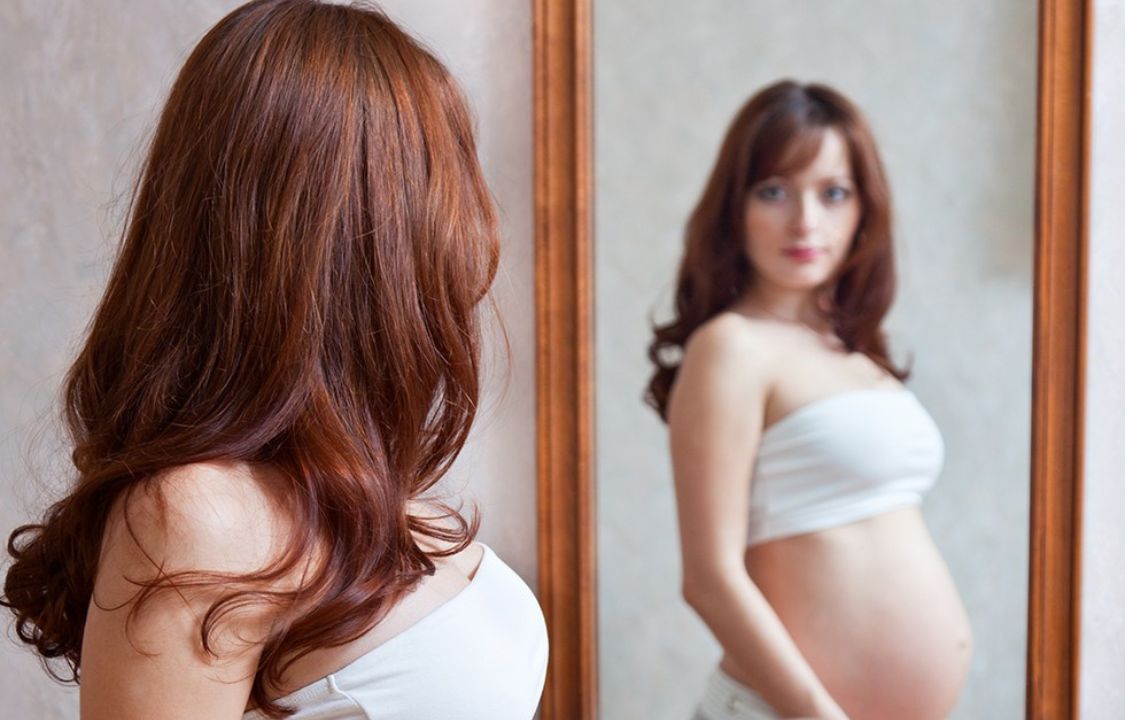Health Care, Insight
Unexpected Ways Pregnancy Changes Your Hair
We asked experts what to expect of your hair when you’re expecting.
Pregnancy is an extraordinary journey marked by numerous physical and emotional changes, many of which are widely anticipated, such as the growing belly, fuller breasts, and radiant skin. Yet, there’s one aspect of pregnancy that often goes unnoticed until it begins to manifest quite distinctly – changes in your hair. The transformation of your hair during pregnancy is a fascinating yet often overlooked aspect of the miraculous journey of motherhood. In this comprehensive exploration, we’ll delve into what you can expect from your hair when you’re expecting, from the lush and luxurious moments to the unexpected challenges that may arise.
The Pantene Commercial Moments: Pregnancy-Induced Luscious Locks
Picture yourself in the midst of a Pantene commercial, each morning, as you stand in your bathroom admiring the transformation of your hair. During pregnancy, your hair undergoes a remarkable transformation, becoming noticeably thicker and more voluminous. Dr. Chloe Zera, an obstetrician-gynecologist at Brigham and Women’s Hospital in Boston, explains that normally, “your hair goes through active and dormant phases of growth.” There’s a delicate balance between these phases, with some hairs in the dormant phase naturally falling out while others in the active phase continue to grow. However, during pregnancy, a significant shift occurs as “more hair enters the active growing phase.” These are the days when you’ll bask in the glory of your luscious locks, but it’s important to note that this phase, like all good things, has an expiration date.
The Postpartum Shedding: Fear Not the Clumps
Postpartum hair changes can be disconcerting, especially when it seems that your hair is falling out in clumps during a simple shower. It can be an alarming sight, but rest assured, you are not actually going bald. Dr. Nicole Williams, founder of The Gynecology Institute of Chicago, clarifies that “when you’re pregnant, your body is in hyperdrive, replicating DNA rapidly and utilizing all its resources.” This rapid growth is what contributes to your thick, luxurious hair during pregnancy. However, after giving birth, this growth process significantly slows down, leading to changes in your hair.
Approximately three to six months postpartum, a sudden drop in hormones triggers more hair follicles to enter the dormant phase, which is when you might start noticing increased shedding, as explained by the American Academy of Dermatology (AAD). The bad news is that there isn’t much you can do to prevent this natural shedding process. The good news is that your hair will eventually begin to grow back. It’s essential to maintain perspective and patience during this phase.
- A word of caution: If your hair loss is accompanied by other concerning symptoms such as changes in bowel movements, unintended weight loss, or fluctuations in sensitivity to temperature, it’s advisable to alert your healthcare provider. They may want to conduct a straightforward blood test to ensure your thyroid is functioning correctly, as suggested by Dr. Zera.
The Unexpected ‘Beard’ and Other Hair Surprises
Pregnancy hormones can bring about a range of surprising changes, including unwanted hair growth in unexpected places like your face or nipples. Dr. Williams explains that elevated estrogen levels during pregnancy can lead to postpartum hormonal imbalances. In some cases, the body converts excess estrogen into testosterone, which may manifest as unwanted facial hair or what some refer to as a “beard.”
Managing these changes can involve various approaches, including laser treatments, waxing, or consulting with a dermatologist. If medication is recommended, it’s crucial to inform your healthcare provider if you are breastfeeding, so they can prescribe a compatible medication, advises Dr. Zera.
The ‘Halo’ and the Whispies Phase
As your hair gradually returns to its pre-pregnancy state, you may notice a distinct change near your forehead, often referred to as the “whispies” phase. These are the tiny, baby hairs that tend to defy styling efforts and form a delicate halo of wispy strands around your hairline. Dr. Zera elaborates that this phenomenon is more noticeable in individuals with longer hair, as the new hairs tend to slip out when attempting to pull them back into a ponytail. This is a common reason why many new moms opt for shorter haircuts, such as a bob, to manage this transitional phase.
Thinner Texture and the Road to Recovery
The general texture of your hair may also undergo changes during and after pregnancy. Dr. Williams explains that due to the gradual restart of the hair growth phase, the newly grown hair may appear finer in texture compared to pre-pregnancy hair. While this transition can be challenging for some, it offers an opportunity to explore new styling techniques or experiment with different hair products.
Fortunately, about a year after giving birth, the texture of your hair should begin to normalize, according to Dr. Williams. So, while there may be moments of adjustment and experimentation, rest assured that your hair will ultimately return to its pre-pregnancy state.
In Conclusion: Embracing the Marvels and Mysteries of Pregnancy
Pregnancy is a transformative journey that touches every aspect of your being, including your hair. From the luxurious locks that grace the early months to the postpartum shedding and unexpected changes, each phase of your hair’s journey is a testament to the remarkable and complex processes occurring within your body. As you navigate the wonders and challenges of pregnancy, remember that your hair, like you, is on a unique journey—one that reflects the awe-inspiring journey of motherhood itself. So, embrace each phase, seek guidance from healthcare professionals when needed, and cherish the beauty of your evolving self, both inside and out.

